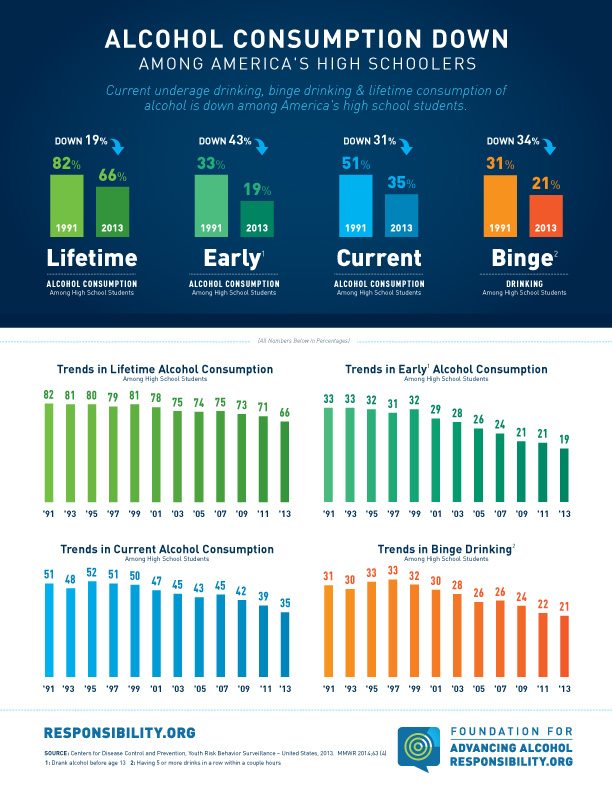CDC Study: Alcohol consumption down among America's high schoolers
Our nation’s high schoolers are drinking less, according to the latest youth study from the Centers for Disease Control and Prevention.
Current underage drinking, binge drinking and lifetime consumption of alcohol is down among America’s high school students, and long-term trends in underage drinking continue to show declining rates of consumption, according to the CDC’s study.
Here are four key takeaways from the newest data:
- More high schoolers are simply choosing not to drink alcohol. From 1991 to 2013, a significant decrease occurred overall in the prevalence of having ever consumed alcohol (81.6% – 66.2%) – a decline of 19 percent.
- Fewer high schoolers reported having their first drink before age 13. During the period 1991 to 2013, a significant decrease occurred overall in the prevalence of having consumed alcohol for the first time before age 13 (32.7% – 18.6%) – early onset consumption has declined 43 percent proportionally since 1991.
- Fewer high schoolers are current drinkers. Between 1991 and 2013, a significant decrease occurred overall in the prevalence of past 30 day alcohol consumption (50.8% – 34.9%) – a decrease of 31 percent, proportionally. Current (past 30 day) alcohol consumption decreased 10 percent from 2011 (38.7%) to 2013 (34.9%).
- Of the high schoolers who drink alcohol, many are binge drinking less often. From 1991 to 2013 binge drinking decreased 34 percent proportionally.
Certainly, there is still much work left to do to make sure these downward trends continue, but it is equally important to take note of and applaud the progress made so far.
Want to help continue this progress? Start a conversation with your kid about underage drinking today. How? It’s often as simple as, “Hey!”
Links to the CDC charts: Alcohol consumption trends, detailed alcohol consumption data by grade 9th graders; 10th graders; 11th graders; and 12th graders
Source: Centers for Disease Control and Prevention, Youth Risk Behavior Surveillance – United States, 2013. MMWR 2014;63 (SS-4).

